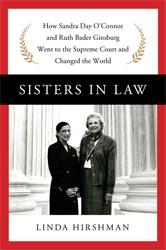
Photo by Camilo Jimenez on Unsplash
In a 1968 article, the literary critic Irving Howe coined the phrase “New York intellectuals” to describe the group of celebrated writers and critics, of which he was a part, who first coalesced in the 1930s around the journal Partisan Review. Howe characterized the New York intellectuals in pugilistic and implicitly masculine terms: the group saw “intellectual life as a form of combat and at its best, their work resulted in a “knockout synthesis.” Debates among different members constituted a “tournament, the writer as gymnast with one eye on other rings, or a skilled infighter juggling knives of dialectic.” In summarizing what bound the group together, Howe memorably added that “by birth or osmosis[,] they are Jews.”
Howe was not alone in juxtaposing Jewishness and masculinity in describing the New York intellectuals. In his 1967 memoir, Making It, Norman Podhoretz, one of the youngest members of this group, also emphasized their cerebral combativeness, explaining that their “prose had verve, vitality, wit, texture, and above all brilliance. [… ] The physical analogy would be with an all-round athlete.” He also compared the group to “Talmudic scholars,” men who, “haunted by what was perhaps the most ferociously tyrannical tradition of scholarship the world has ever seen, [ … ] seem to believe that one must have mastered everything before one is entitled to the temerity of saying anything on paper.”
The New York intellectuals included men and women, Jews and non-Jews. However, they all embraced a uniquely American vision of Jewish masculinity that at its core prized verbal combativeness, polemical aggression, and an unflinching style of argumentation. The handful of women considered part of this milieu had to embrace this style in order to be taken seriously. But they also needed to walk a fine line. Women were often seen as more acerbic than their male counterparts precisely because they had to “write like a man.” And when deemed too combative and opinionated, they were denigrated as bitchy. Hannah Arendt was an “aggressively intellectual woman” and “anyone who took her on in debate knew he had taken on a heavyweight and usually found out he was overmatched,” the editors of Partisan Review recalled in memoirs published in 1983. But after she published Eichmann in Jerusalem (1962−63) she was called “Hannah Arrogance” behind her back. Diana Trilling arguably garnered a reputation as the most annoying of them all. “Her favorite literary genre seemed to be the letter to the editor,” observed Alfred Kazin. “Sometimes she wrote in to criticize an unfavorable review of a book for not being unfavorable enough.” According to another writer, she was “an outrageous diva, all temperament, no rationality whatsoever.” Diana Trilling was undoubtedly difficult. Yet most of the men in this group were difficult, too. They were combative and abrasive; callous at times. Nevertheless, their reputations were never reduced to those qualities.
“[Diana Trillings’s] favorite literary genre seemed to be the letter to the editor,” observed Alfred Kazin. “Sometimes she wrote in to criticize an unfavorable review of a book for not being unfavorable enough.”
To the nineteenth century, writing was in many ways “feminine.” Those were years that saw the proliferation of female novelists like Jane Austen, the Brontës, Harriet Beecher Stowe, Emily Dickinson, and Edith Wharton, among others. Women also took over the teaching profession and began to make important contributions to the development of modern mass culture and thus what everybody read. Half a century ago, the literary historian Ann Douglas famously argued that writers, like ministers, painters, and professional actors, were considered “sissies” in the golden age of the novel. While the New York intellectuals were not the first group of writers to re-masculinize American literary culture — their was also the Lost Generation of the 1920s, the Hemingways and Fitzgeralds — their vision of secular Jewish masculinity was seen as an outsider position when it was introduced in the 1930s and ’40s. Their“ polemical ferocity,” as Irving Howe called it, was not initially welcomed. Ultimately, however, “[r]udeness became a spear with which to break the skin of complacency.” Furthermore, Howe noted, “rudeness was not only the weapon of the cultural underdog, but also a sign that intellectual Jews had become sufficiently self-assured to stop playing by gentile rules.”
‘Rudeness became a spear with which to break the skin of complacency.’
In the postwar years, the New York intellectuals brought their style to the American mainstream. It shaped some of the most important political and cultural debates in modern America. But as Jews ostensibly became insiders in American life, the New York intellectuals wrestled with their newfound influential status. How much could they integrate into American intellectual and political life without losing their distinctly Jewish, combative, and masculine edge?


